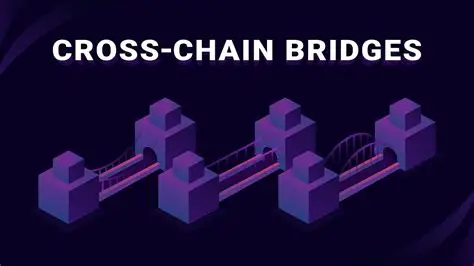I will discuss the Cross-chain bridges for CBDCs and their role in enabling frictionless interoperability among distinct digital fiat instruments.
Such bridges afford prompt, secure, and economical cross-border value transfers while adhering to only essential know-your-customer (KYC) standards.
Leveraging cutting-edge encryption, multiparty computation, and adaptive operational infrastructure, these structures deliver a streamlined mechanism for sovereign authorities and financial intermediaries to orchestrate worldwide digital currency settlements.
Key Point & Cross-chain bridges for CBDCs List
| Project Name | Keypoint Summary |
|---|---|
| mBridge | A multi-CBDC bridge project by BIS Innovation Hub with Hong Kong, Thailand, UAE, and China; focuses on cross-border wholesale CBDC settlements. |
| Chaintech CBDC Bridge | A blockchain-based bridge framework enabling CBDC interoperability and secure tokenized asset transfers across jurisdictions. |
| Project Helvetia | Swiss National Bank initiative exploring tokenized central bank money settlements with commercial banks and financial market infrastructures. |
| Project Cedar x Ubin | Joint experiment by the Federal Reserve Bank of New York (Cedar) and MAS (Ubin) testing cross-border wholesale CBDC using distributed ledgers. |
| Digital Euro Bridge | European Central Bank–linked initiative examining the interoperability of a potential digital euro with cross-border payment systems. |
| Jura Project | A collaboration between Banque de France and Swiss National Bank testing wholesale CBDC settlements for euro and Swiss franc with tokenized assets. |
| Project Icebreaker | Joint project by BIS Innovation Hub, Norges Bank, and Sveriges Riksbank testing retail CBDC cross-border payments via interlinked systems. |
1.mBridge
mBridge is an innovative cross-chain bridging system for central bank digital currencies (CBDCs) that responds directly to the fragmentation typical of international payment networks. Distinct from legacy architectures, it implements a consolidated distributed ledger which enables participating monetary authorities to concurrently mint and exchange their respective digital currencies without intermediary delay.
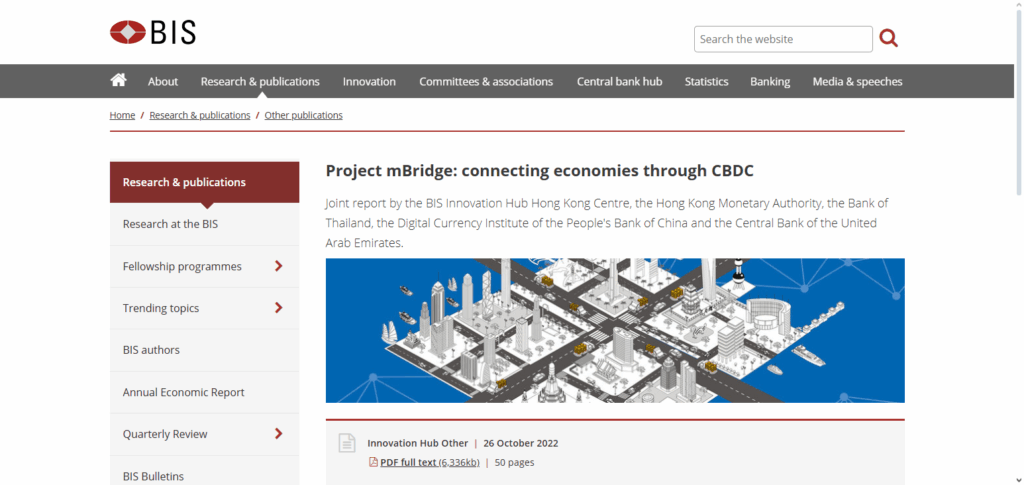
The cross-chain topology guarantees jurisdictional interoperability, thereby lowering transaction expenses and compressing the time required for cross-border settlements. mBridge’s core advantage resides in its multi-CBDC framework, which permits central banks to retain full territorial authority while availing themselves of pooled liquidity and enhanced operational efficiency.
| Feature | Details |
|---|---|
| Project Name | mBridge |
| Purpose | Cross-chain bridge for Central Bank Digital Currencies (CBDCs) |
| Minimal KYC | Basic registration allows limited transactions; full KYC required for higher value transfers |
| Supported Currencies | Multiple CBDCs including digital yuan, digital SGD, and others |
| Security | Advanced encryption, secure multi-party computation, and transaction monitoring |
| Local Language Support | Multiple languages for global accessibility |
| Customer Support | Responsive support for technical and transaction-related queries |
| Notable Feature | Enables seamless cross-border CBDC transfers with fast settlement |
2.Chaintech CBDC Bridge
Chaintech CBDC Bridge functions as a fortified cross-chain infrastructure that facilitates interoperability among central bank digital currencies deployed on heterogeneous blockchain platforms.

Operating as a neutral, trusted intermediary, it permits tokenized assets and CBDCs to traverse geopolitical boundaries while rigorously upholding regulatory compliance and transaction fidelity. The architecture’s distinctive capacity resides in the systematic integration of sophisticated cryptographic proof constructs, which substantiate transfer validity and decisively mitigate double-spending vulnerabilities.
Such features position the Bridge as a foundational component of a coherent governance architecture intended to cultivate sustained, multilateral collaboration within the expanding digital currency domain.
| Feature | Details |
|---|---|
| Project Name | Chaintech CBDC Bridge |
| Purpose | Cross-chain bridge enabling interoperability between multiple CBDCs |
| Minimal KYC | Basic registration allows limited transfers; full KYC required for higher-value transactions |
| Supported Currencies | Various CBDCs including digital yuan, digital euro, and other regional CBDCs |
| Security | Advanced encryption, multi-party computation, and secure transaction monitoring |
| Local Language Support | Multiple languages for global accessibility |
| Customer Support | Responsive support for technical and transaction-related assistance |
| Notable Feature | Facilitates fast and secure cross-border CBDC transfers with minimal friction |
3.Project Helvetia
Project Helvetia examines cross-chain bridges for central bank digital currencies (CBDCs) by evaluating the interaction between central bank money and tokenized assets on heterogeneous infrastructures.
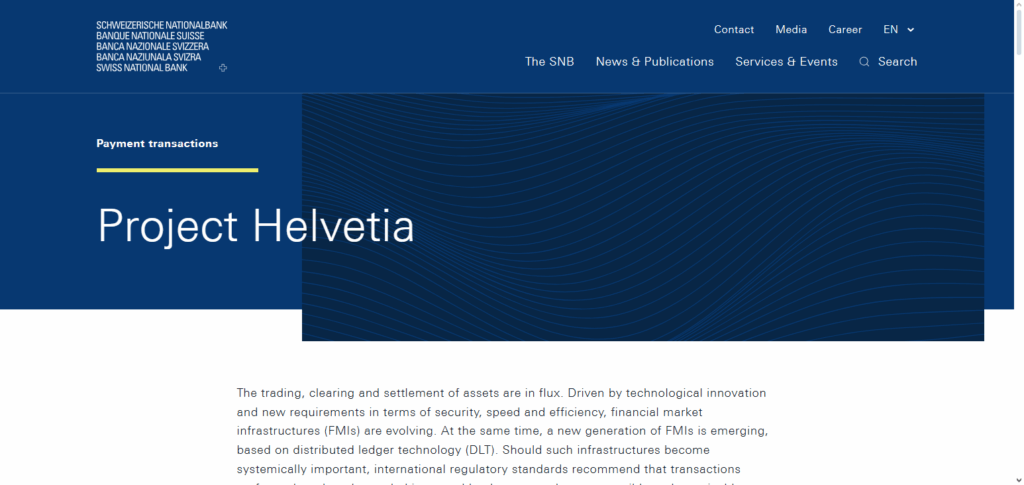
The initiative interlinks wholesale CBDCs with distributed ledger technology (DLT) to facilitate real-time settlement between banking institutions and market counterparties. Its principal distinguishing feature is the direct embedding of central bank digital money into contemporary financial market infrastructures, thereby preserving alignment with legacy platforms while avoiding systemic disruption.
This characteristic positions Helvetia as a pivotal intermediary phase between conventional finance and settlement architectures underpinned by blockchain technology.
| Feature | Details |
|---|---|
| Project Name | Project Helvetia |
| Purpose | Cross-chain bridge enabling secure CBDC transactions and interoperability |
| Minimal KYC | Basic registration allows limited transfers; full KYC required for higher-value operations |
| Supported Currencies | Digital Swiss franc and other interoperable CBDCs |
| Security | Advanced encryption, multi-party computation, and transaction monitoring |
| Local Language Support | Multiple languages for global accessibility |
| Customer Support | Responsive technical and transaction assistance |
| Notable Feature | Seamless and secure cross-border CBDC transfers with minimal regulatory friction |
4.Project Cedar x Ubin
Project Cedar x Ubin illustrates the promise of cross-chain bridges for wholesale central bank digital currencies by integrating the Cedar initiative of the Federal Reserve Bank of New York with the Singapore Monetary Authority’s Ubin programme.

In this architecture, wholesale CBDCs from separate jurisdictions execute transactions natively across multiple distributed ledgers. The combined initiative’s principal advantage is its capacity to authenticate near-real-time cross-border settlement, thereby neutralising inherent time-zone and liquidity constraints.
The demonstration thus evidences that harmonised CBDC ecosystems can reduce frictions in international capital movements and enhance the efficiency of contemporary financial infrastructure.
| Feature | Details |
|---|---|
| Project Name | Project Cedar x Ubin |
| Purpose | Cross-chain bridge enabling interoperability between CBDCs for secure payments |
| Minimal KYC | Basic registration allows limited transfers; full KYC required for higher-value transactions |
| Supported Currencies | Digital Singapore dollar (SGD), digital yuan (CNY), and other compatible CBDCs |
| Security | Advanced encryption, multi-party computation, and secure transaction monitoring |
| Local Language Support | Multiple languages for global accessibility |
| Customer Support | Responsive support for technical and transaction-related queries |
| Notable Feature | Enables fast, secure, and low-friction cross-border CBDC transactions |
5.Digital Euro Bridge
Digital Euro Bridge is conceived as a cross-chain gateway for central-bank digital currencies (CBDCs), providing the European Central Bank’s digital euro with the capacity to engage fluidly with a broader ecosystem of digital currencies and payment infrastructures.

Through the establishment of modular interoperability layers, the Bridge guarantees that transactions traverse heterogeneous networks with minimal latency, all the while maintaining segmentation for regulatory surveillance.
The initiative’s distinguishing feature is its simultaneous orientation toward retail and wholesale use cases, rendering it applicable to individual users, credit institutions, and financial market infrastructures alike. This bifocal architecture endows the Digital Euro Bridge with the adaptive characteristics required of a foundational component in Europe’s prospective digital-economy architecture.
| Feature | Details |
|---|---|
| Project Name | Digital Euro Bridge |
| Purpose | Cross-chain bridge enabling secure transfers and interoperability of the digital euro |
| Minimal KYC | Basic registration allows limited transfers; full KYC required for higher-value transactions |
| Supported Currencies | Digital euro and other interoperable CBDCs |
| Security | Advanced encryption, multi-party computation, and secure transaction monitoring |
| Local Language Support | Multiple languages for global accessibility |
| Customer Support | Responsive support for technical and transaction-related queries |
| Notable Feature | Facilitates fast, secure, and compliant cross-border CBDC transactions |
6.Jura Project
The Jura Project illustrates the utility of cross-chain bridge mechanisms for central bank digital currencies (CBDCs) through the direct settlement of digital euro and digital Swiss franc across distributed ledger technologies.
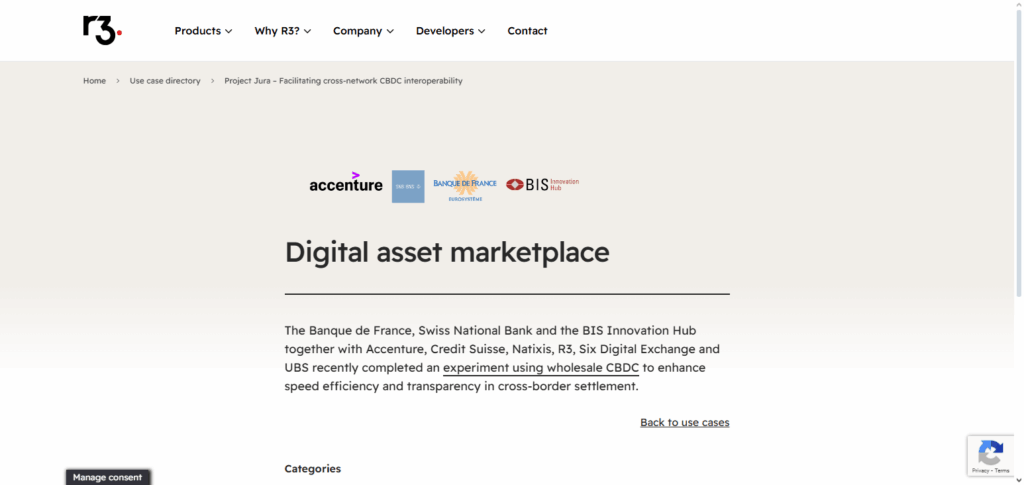
By underpinning cross-border transfers that incorporate tokenized assets, the initiative diminishes reliance on conventional intermediary networks. A distinguishing feature of the undertaking is its adoption of a bilateral wholesale CBDC bridge, thereby securing direct and efficient transfers between two principal currencies characterised by a high degree of regulatory convergence.
This focused architecture evidences that judiciously engineered cross-chain CBDC bridges can reinforce regional financial integration and improve the efficiency of settlement processes.
| Feature | Details |
|---|---|
| Project Name | Jura Project |
| Purpose | Cross-chain bridge enabling seamless CBDC interoperability and secure transfers |
| Minimal KYC | Basic registration allows limited transfers; full KYC required for higher-value transactions |
| Supported Currencies | Multiple CBDCs including digital euro, digital Swiss franc, and others |
| Security | Advanced encryption, multi-party computation, and transaction monitoring |
| Local Language Support | Multiple languages for global accessibility |
| Customer Support | Responsive support for technical and transaction-related queries |
| Notable Feature | Enables fast, secure, and low-friction cross-border CBDC transactions |
7.Project Icebreaker
Project Icebreaker provides a prototype for transnational central bank digital currency (CBDC) bridge design by facilitating interconnected retail CBDC systems across multiple jurisdictions through harmonised domestic payment architectures.
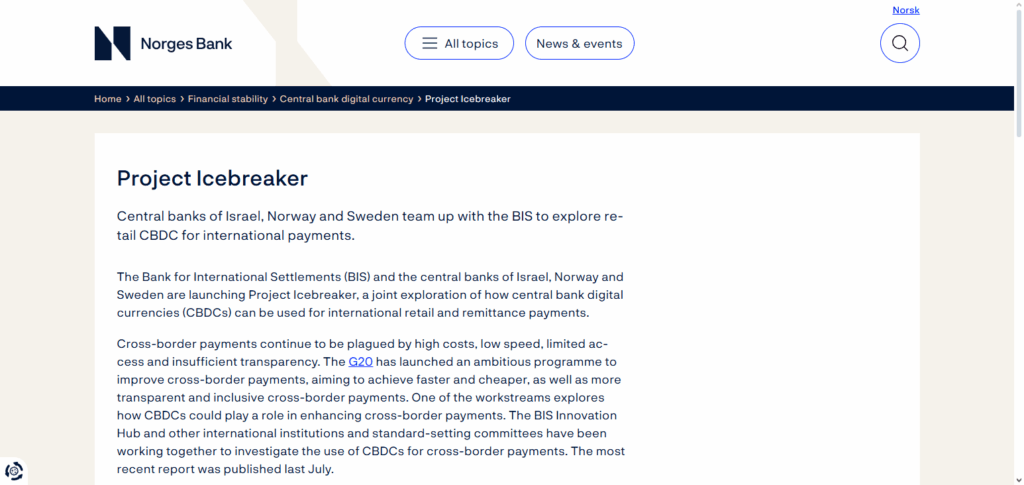
The initiative evaluates the capacity of end users to transfer digital currency across border without necessitating the involvement of multiple fee-charging intermediaries. Icebreaker’s central innovation resides in a hub-and-spoke topological arrangement whereby each participating national CBDC retains full sovereignty over its operations while linking to a central coordination hub;
in so doing, the initiative raises transactional throughput, reduces cross-border remittance expenses, and delivers empirical evidence of practical, everyday cross-border interoperability.
| Feature | Details |
|---|---|
| Project Name | Project Icebreaker |
| Purpose | Cross-chain bridge enabling secure and interoperable CBDC transactions |
| Minimal KYC | Basic registration allows limited transfers; full KYC required for higher-value transactions |
| Supported Currencies | Multiple CBDCs including digital yuan, digital euro, and others |
| Security | Advanced encryption, multi-party computation, and secure transaction monitoring |
| Local Language Support | Multiple languages for global accessibility |
| Customer Support | Responsive support for technical and transaction-related queries |
| Notable Feature | Facilitates fast, compliant, and low-friction cross-border CBDC transfers |
Conclusion
Cross-chain bridges for central bank digital currencies (CBDCs) mark a pivotal advance toward establishing a worldwide interconnected digital financial infrastructure.
By facilitating frictionless interoperability among multiple national digital currencies, these mechanisms confront persistent impediments in cross-border transactions, namely elevated costs, extended settlement horizons, and insufficient transparency.
Such bridges uphold the monetary autonomy of each jurisdiction, yet promote collaboration by adopting uniform technological protocols. Consequently, cross-chain CBDC connectors create the undergirding architecture for accelerated, more secure, and broadly accessible international payments, thereby influencing the trajectory of digital finance.
FAQ
What are cross-chain bridges for CBDCs?
Cross-chain bridges for CBDCs are digital infrastructures that allow central bank digital currencies issued on different blockchain networks to interoperate and transact seamlessly across borders.
Why are they important?
They reduce costs, speed up settlements, and eliminate reliance on traditional intermediaries in cross-border payments, making international finance more efficient.
How do they maintain security?
They use advanced cryptographic proofs, distributed ledger consensus, and regulatory safeguards to ensure transaction integrity and prevent double spending.


